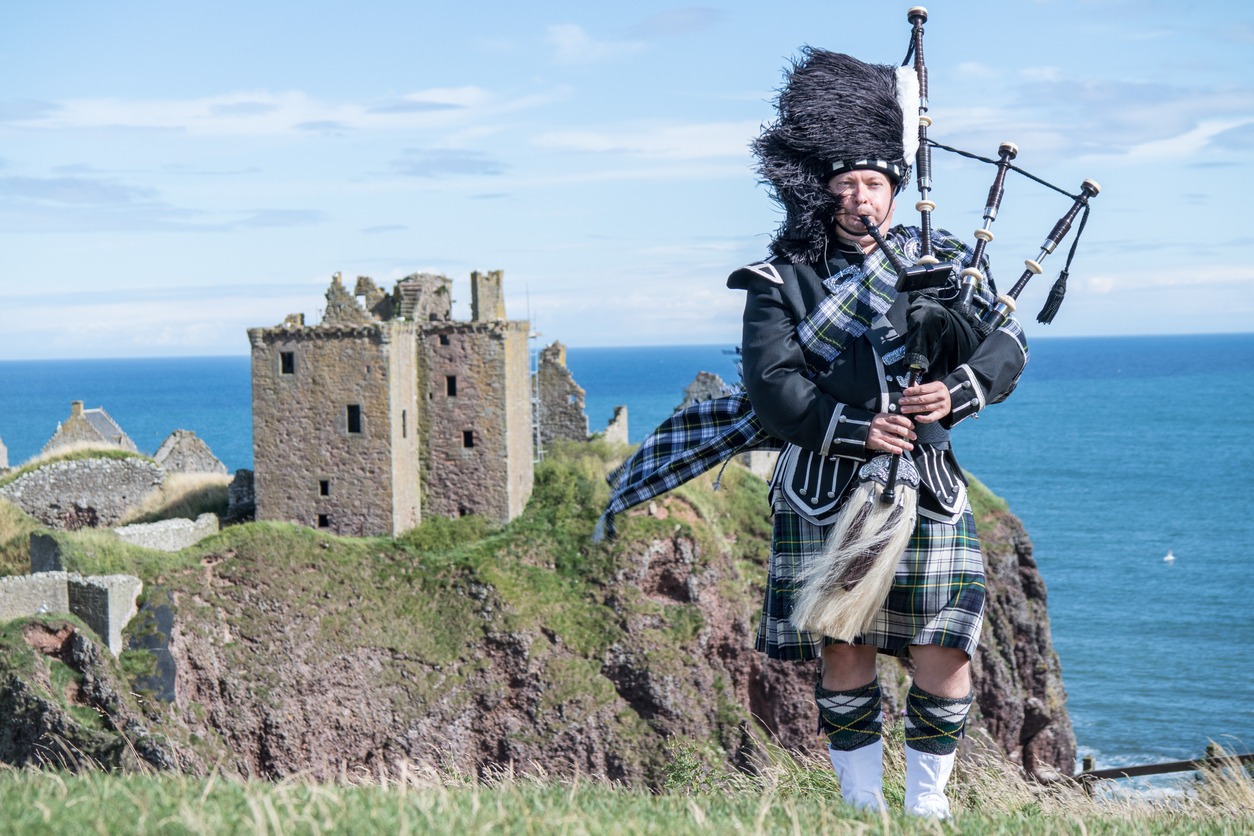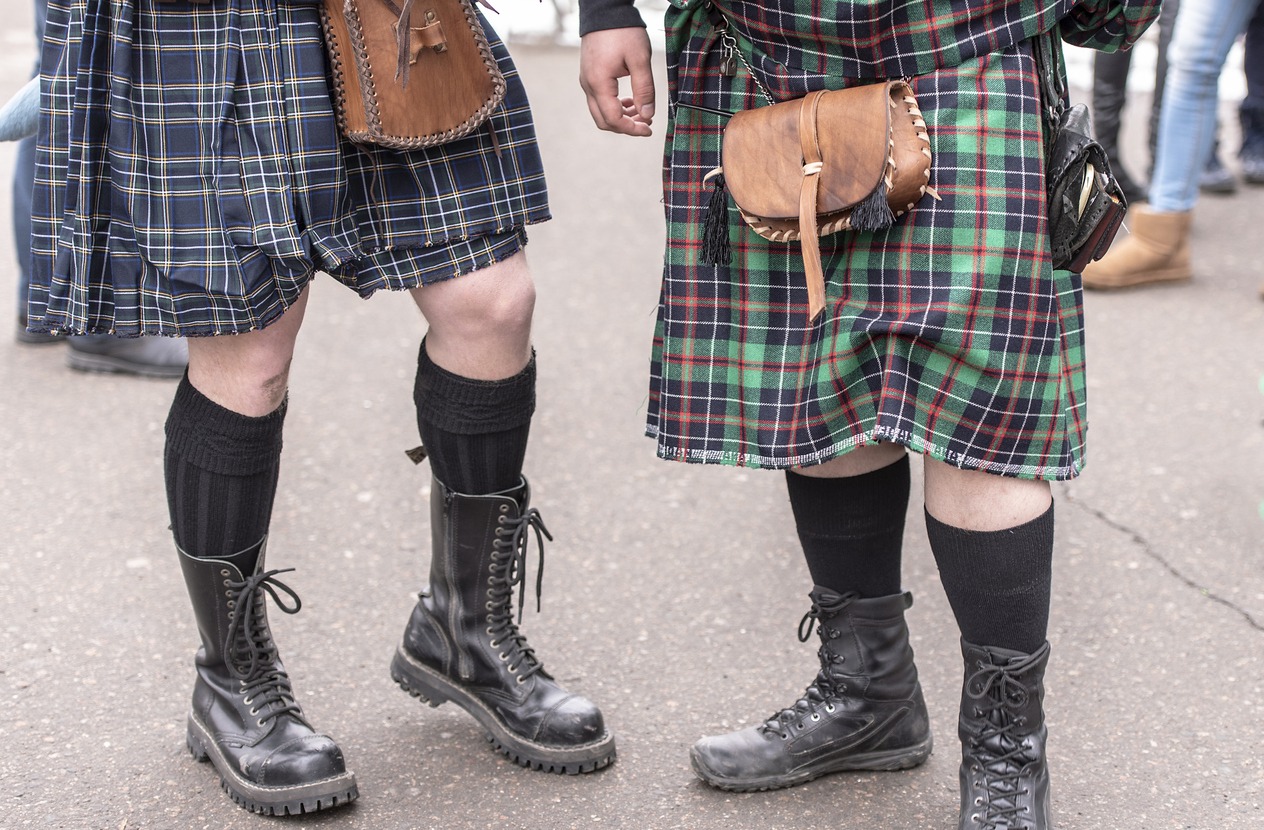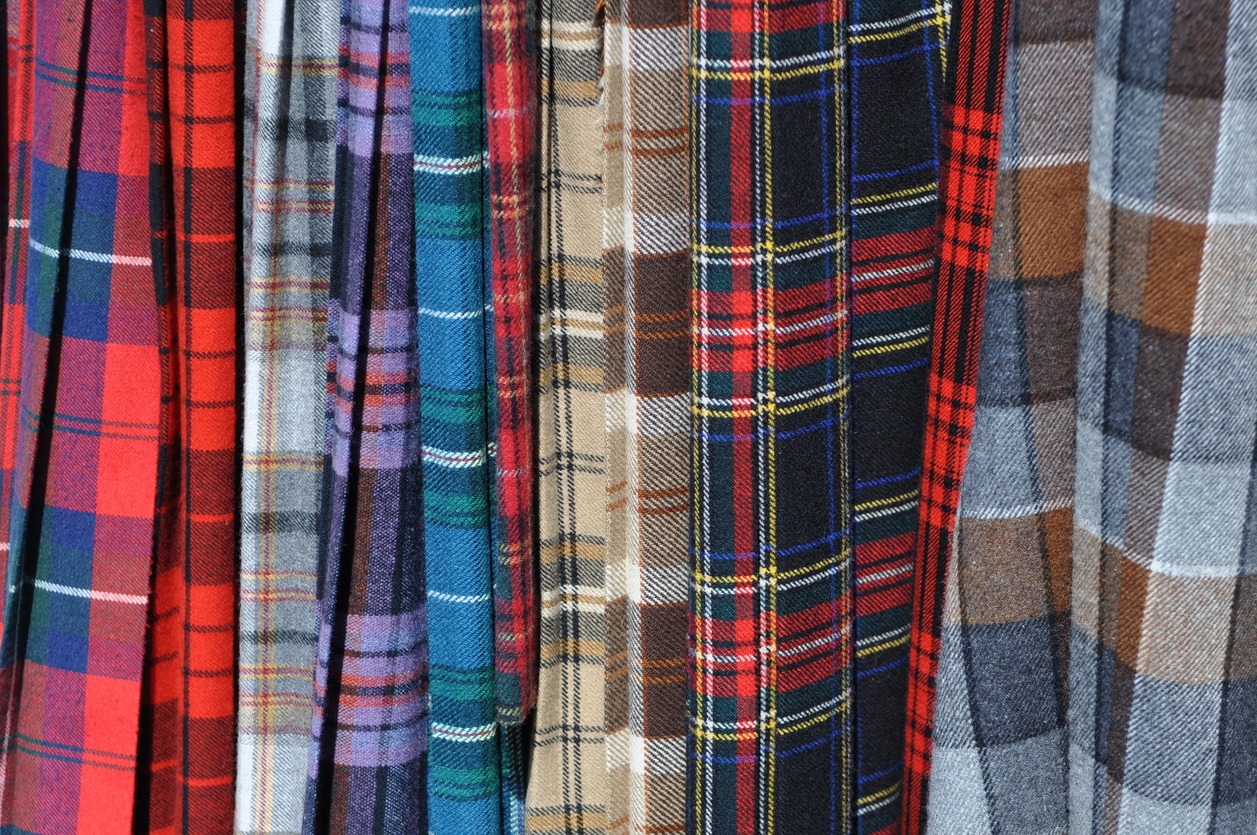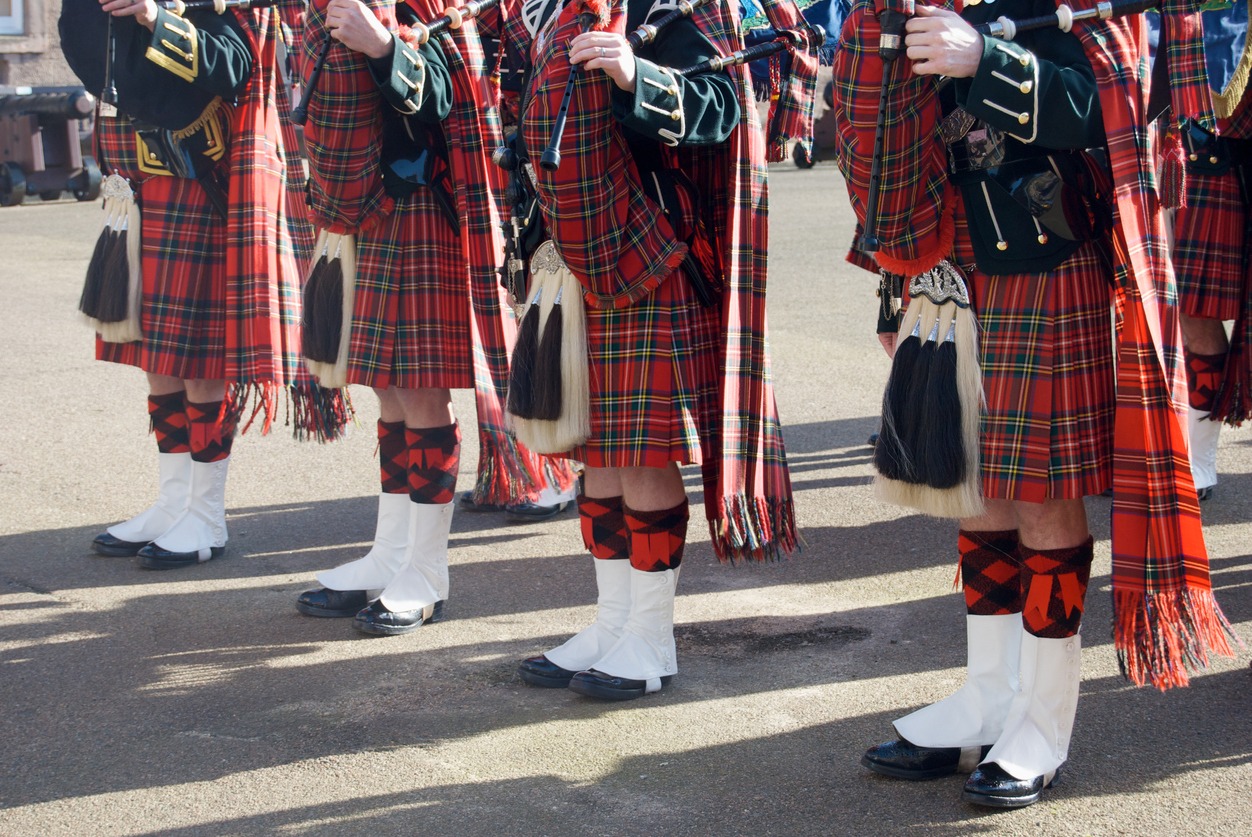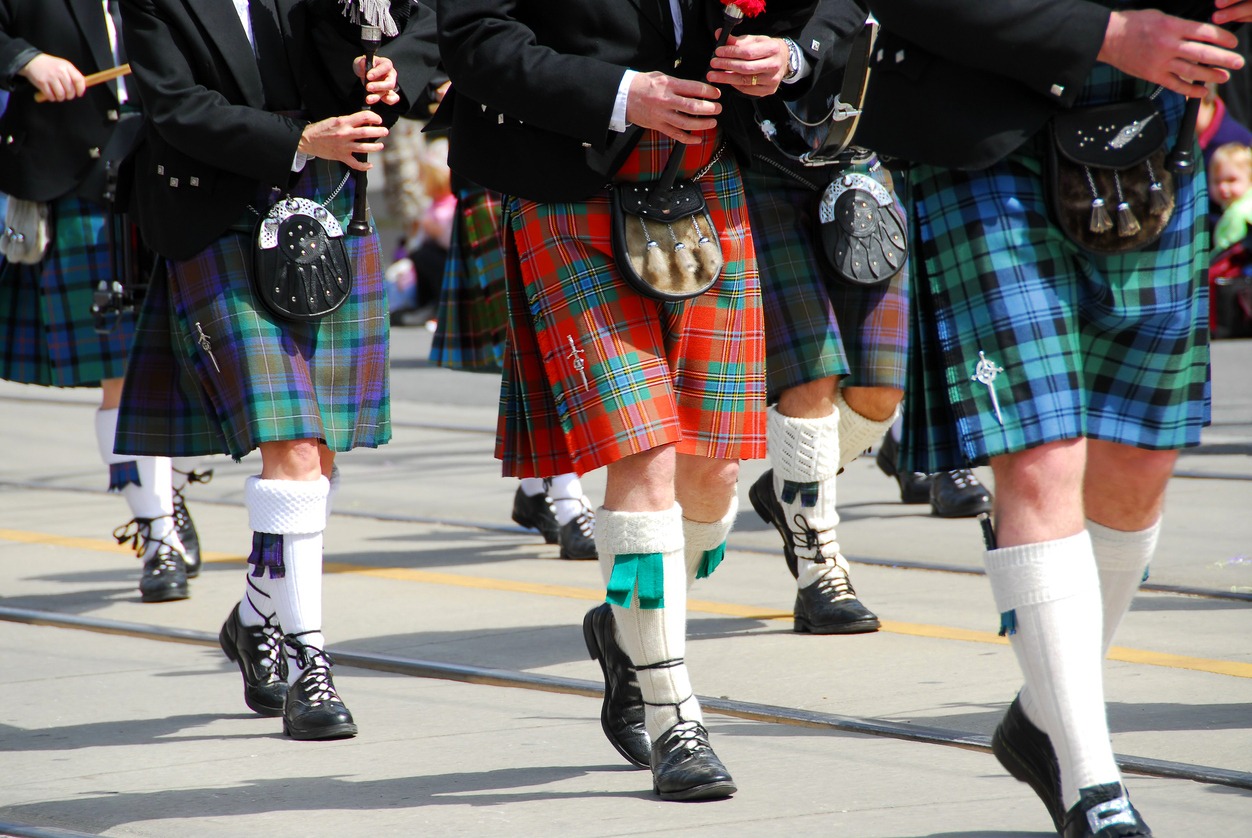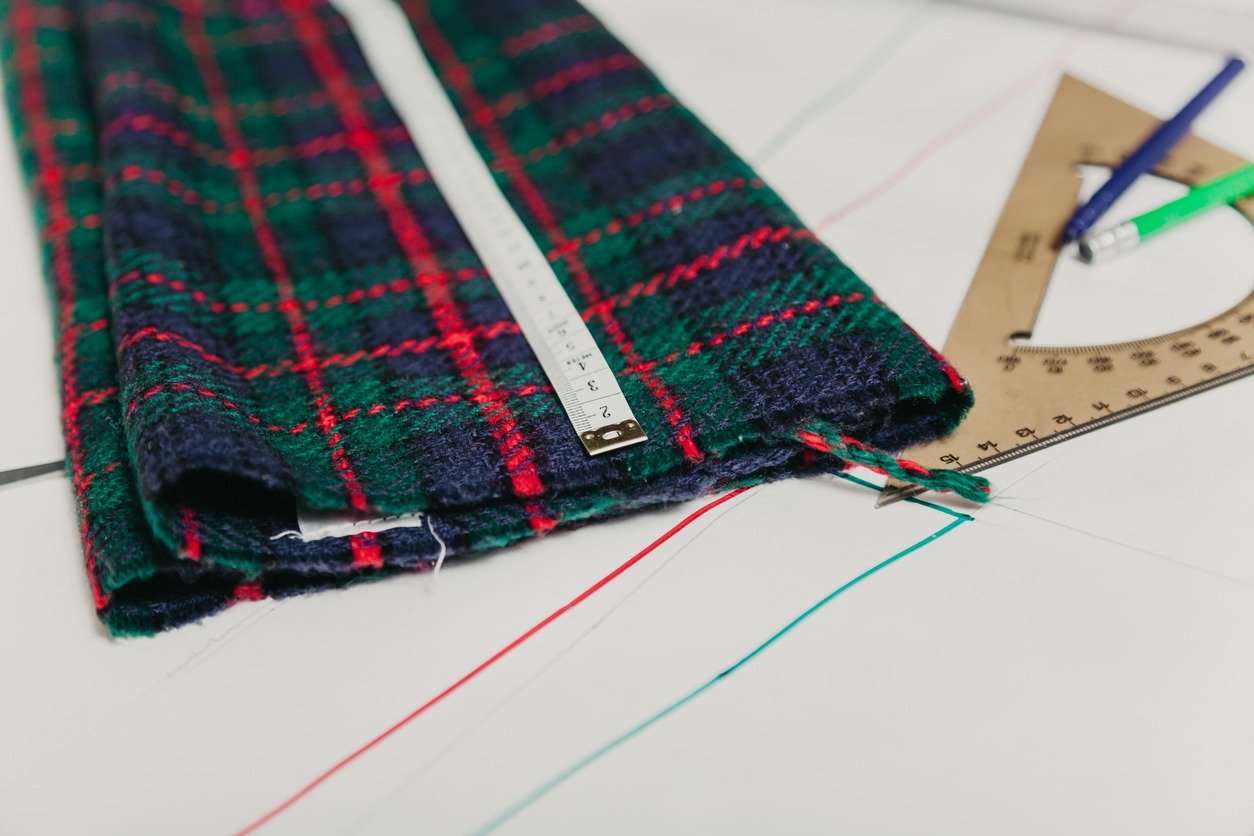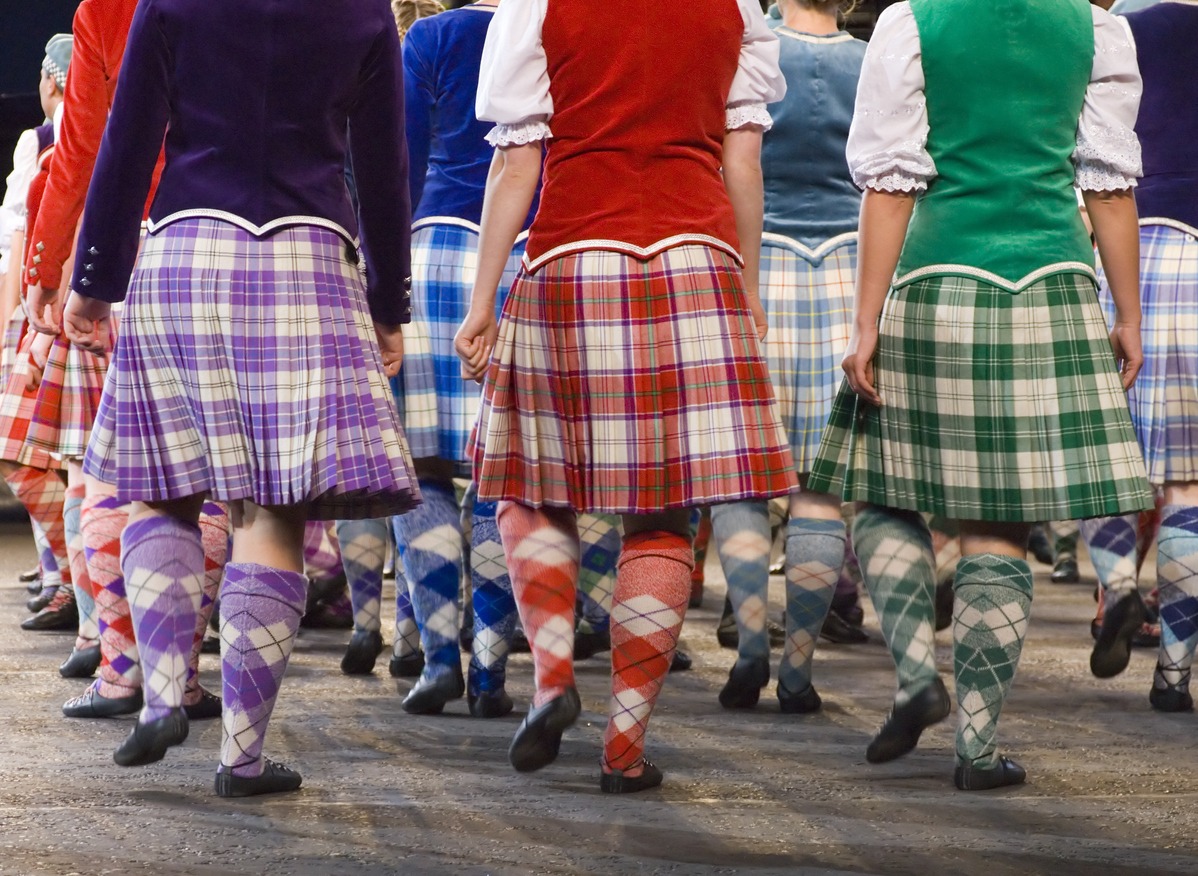The kilt and tartan are more than just items of clothing in Scotland; they are enduring symbols of a rich cultural heritage. For centuries, these distinctive patterns and garments have told stories of clan history, regional identity, and national pride. This article dives into the fascinating world of Scottish Highland dress to explore why kilts and tartans hold such a special place in Scottish hearts.
We’ll journey through time to understand the origins of these iconic symbols, their historical significance, and how they continue to resonate in modern Scottish life. From the battlefields to the fashion runways, the kilt and tartan have evolved while maintaining their core cultural values. Join us as we unravel the threads of history and tradition woven into every fold and color of Scotland’s famous Highland dress.
History of Kilts and Tartans
The story of kilts and tartans begins in the misty highlands of ancient Scotland. Originally, the kilt was known as the ‘feileadh mòr’ or ‘great kilt,’ a full-body garment that the Gaelic men of the highlands wore. It was a multi-functional piece, acting as clothing by day and blanket by night. Tartan patterns, meanwhile, were not initially tied to specific clans. Instead, they were regional, with colors and patterns depending on the natural dyes available locally.
Evolution of Tartan Patterns
As time went on, tartan patterns began to evolve. By the 17th and 18th centuries, these patterns became more intricate and complex. The Act of Proscription in 1746, following the Jacobite uprisings, even sought to ban the kilt and tartan to suppress Highland culture. However, this only cemented their role as symbols of Scottish identity. After the ban was lifted in 1782, tartans began to be associated with specific clans, a practice that was further popularized by the visit of King George IV to Scotland in 1822.
Development of the Modern Kilt
The modern kilt, known as the ‘feileadh beag’ or ‘little kilt,’ emerged in the late 17th and early 18th centuries. Unlike the great kilt, this version was a tailored garment that wrapped around the waist and hung to the knees. It was more practical for everyday wear, especially for military use. This is the kilt we recognize today – a symbol of Scottish heritage that is worn with pride in both formal and informal settings.
The Tartan’s Regional Significance
Originally, tartans were not exclusive to families or clans. The regional aspect of tartans is a key part of their history. Weavers in different areas of Scotland would use local plants and materials to dye the wool, resulting in distinct color schemes unique to those regions. This regional variation laid the foundation for the diverse array of tartans we see today.
The history of kilts and tartans reflects the changing times and the enduring spirit of Scotland. From a practical garment of the highland warriors to a modern symbol of national identity, the journey of the kilt and tartan is as colorful and varied as the patterns themselves.
Tartan – Clan Identity and Symbolism
The tartan is much more than a mere pattern in Scottish culture; it is a deeply ingrained symbol of clan identity and heritage. Each tartan pattern, with its unique combination of colors and lines, tells a story, linking individuals to their ancestral clans and the history of Scotland itself.
The Emergence of Clan Tartans
The practice of associating specific tartan patterns with Scottish clans gained momentum in the 19th century. This was partly influenced by the romantic movement and the revival of Scottish culture following the repeal of the Act of Proscription. To formalize these associations, many tartans were recorded and registered, solidifying the connection between families and their traditional patterns.
Symbolism in Tartan Patterns
Each tartan pattern carries its own unique symbolism. The colors and designs can represent geographical regions, historical events, or elements significant to the clan’s history. Some tartans are designed to commemorate specific events or individuals in Scottish history, serving as a woven narrative of the clan’s heritage.
Examples of Famous Clan Tartans
- MacDonald Tartan: Known for its red and green pattern, it represents one of the largest and oldest Scottish clans.
- Campbell Tartan: Dominated by green, blue, and black, it’s associated with one of Scotland’s most influential clans in the Highlands.
- Stewart Tartan: Recognizable by its vibrant red and contrasting green, it’s linked to the royal House of Stewart.
Tartans in Modern Clan Gatherings
Tartans play a significant role in modern clan gatherings and Highland games, where members wear their clan tartans as a sign of unity and pride. Wearing a specific tartan at these events is not just a sartorial choice; it’s a way to visibly connect with one’s ancestral past and the larger Scottish community.
Preservation of Tartan Heritage
Institutions dedicated to preserving the history and legacy of tartan patterns, such as the Scottish Tartans Authority, play a crucial role in maintaining this cultural heritage. Internationally, Tartan Day is celebrated, especially in countries with significant Scottish diaspora, reinforcing the global connection to Scottish clan heritage.
Tartans are a canvas of history and identity, deeply woven into the Scottish clan system. Each pattern is a testament to the enduring legacy of Scotland’s ancestral past and a vibrant symbol of clan unity and pride.
The Kilt in Military and Ceremonial Use
The Scottish kilt, beyond its cultural symbolism, has a storied history in military and ceremonial contexts. This iconic garment has served not only as a marker of Scottish heritage but also as a uniform of valor and pride in various military settings.
Historical Significance in the Military
The kilt’s use in the military dates back to the 17th century when Highland regiments of the British Army adopted it as part of their uniform. The kilt, with its rugged design and association with Scottish warrior culture, was seen as an ideal garment for soldiers.
During World War I and II, Scottish regiments famously wore kilts in battle. These regiments were often at the forefront of military campaigns, and their distinctive uniforms became synonymous with bravery and resilience.
The Kilt in Modern Military Ceremonies
Today, the kilt is primarily seen in ceremonial roles within the military. Scottish regiments wear it during formal occasions, parades, and other events where military tradition is honored. Each regiment has its own specific tartan pattern, reflecting its unique history and identity within the broader scope of the British Army.
The Kilt in National and Royal Events
Kilts are a common sight at national events in Scotland, such as official state visits or celebrations. They are worn as a symbol of national pride and cultural identity. The kilt is also featured in royal ceremonies, especially those involving the British royal family’s connections to Scotland. Members of the royal family are often seen wearing kilts during visits to Scotland, underscoring the garment’s ceremonial importance.
The Kilt as Ceremonial Dress
In the civilian realm, kilts are a popular choice for weddings and formal events in Scotland. They are worn as a nod to Scottish heritage and often involve the groom and male attendees donning their family or regional tartans. The Scottish kilt also makes appearances at international events, where it is worn as a representation of Scottish culture and identity on a global stage.
Preservation and Promotion of Military Tartans
Organizations dedicated to preserving the history of military tartans play a crucial role in maintaining this aspect of kilt heritage. Museums and military heritage organizations often include kilts in their exhibits and educational programs to highlight the garment’s historical significance.
The kilt’s role in military and ceremonial contexts is a testament to its versatility and enduring significance. From the battlefields of the past to the ceremonial parades of today, the kilt continues to be a powerful symbol of Scottish bravery, tradition, and pride.
Tartan and Kilt in Modern Scottish Culture
The tartan and kilt, while deeply rooted in Scotland’s past, continue to play a vibrant and evolving role in modern Scottish culture. Far from being relics, these symbols of heritage have adapted to contemporary life, showcasing the dynamic nature of Scottish identity.
Tartans in Contemporary Fashion
- Fashion Industry: Tartans have found their way into the global fashion scene. Designers often incorporate tartan patterns into their collections, blending traditional motifs with modern styles.
- Streetwear and Everyday Fashion: Beyond high fashion, tartans are also seen in everyday wear. Younger generations in Scotland and beyond are embracing tartan in various forms, from casual kilts to tartan-trimmed accessories.
The Kilt’s Modern Adaptations
- Casual and Formal Wear: The kilt has transcended its ceremonial origins to become a versatile garment for both casual and formal occasions. Modern kilts come in various fabrics and designs, catering to different tastes and settings.
- Gender-Inclusive Fashion: The kilt is increasingly being recognized as a gender-neutral garment, embraced by people of all genders as a statement of style and heritage.
Tartan and Kilt in Scottish Events
- Festivals and Celebrations: In Scotland, festivals and public celebrations often feature tartan and kilt prominently, with attendees donning these items as a celebration of Scottish culture.
- Highland Games: The Highland Games, both in Scotland and internationally, continue to showcase the kilt as part of traditional athletic wear, reinforcing its cultural significance.
Tartan and Kilt in Pop Culture
- Movies and Television: The tartan and kilt have been popularized globally through their depiction in movies and TV shows, often representing Scottish culture and history.
- Music and Performance Arts: Bands and artists, especially those with Scottish roots, sometimes incorporate tartan and kilt into their performances as a nod to their heritage.
The Role of Tartan and Kilt in Education and Preservation
- Cultural Education: In Scotland, educational initiatives often include lessons on the history and significance of tartan and kilt, ensuring that younger generations understand and appreciate their cultural heritage.
- Craftsmanship and Preservation: The art of creating tartans and making kilts is being preserved by artisans who continue to practice traditional methods while also innovating for modern tastes.
The Art of Kilt Making
Kilt making is an intricate craft deeply rooted in Scottish tradition. It’s a process that combines historical techniques with artistic skill, resulting in a garment that is both a work of art and a piece of cultural heritage.
Traditional Methods of Kilt Making
- Measuring and Cutting: The process begins with precise measurements to ensure a perfect fit. The fabric, usually wool, is then carefully cut, keeping in mind the tartan’s pattern and sett.
- Pleating the Tartan: One of the most critical steps is pleating the tartan. This involves laying out the fabric and folding it so that the tartan’s pattern aligns in a symmetrical and aesthetically pleasing manner.
- Stitching and Assembly: After pleating, the kilt is stitched together. This includes securing the pleats and adding straps and buckles for fastening. Traditional kilt makers do much of this work by hand, a testament to their skill and dedication to the craft.
The Craftsmanship of Tartan Patterns
The creation of tartan patterns is a craft in itself. It begins with dyeing the wool in various colors, followed by weaving them into distinctive crisscross patterns. Each tartan pattern is unique and requires a deep understanding of color, symmetry, and historical significance. Artisans often work closely with clients to create custom tartans that reflect personal or family heritage.
The Role of Local Artisans
Local artisans are the custodians of the kilt-making tradition. They preserve ancient techniques while also adapting to contemporary styles and demands. Many kilt makers pass on their knowledge through teaching and apprenticeships, ensuring that the art form continues for future generations.
Innovation in Kilt Making
While traditional kilts are made of wool, modern kilt makers also experiment with new materials like leather, denim, and synthetic fabrics to appeal to diverse tastes and needs. Modern kilts may feature adjustments for comfort and practicality, such as pockets or lighter fabrics, making them suitable for various occasions and lifestyles.
The art of kilt-making is a beautiful blend of history, craftsmanship, and cultural expression. It’s a practice that not only preserves a significant aspect of Scottish heritage but also continuously evolves, keeping the tradition alive and relevant in the modern world.
The Kilt and Tartan in Global Perception
The kilt and tartan, symbols deeply rooted in Scottish culture, have transcended their origins to gain significant recognition and admiration around the world. This global perception is a testament to their enduring appeal and the widespread influence of Scottish heritage.
The Kilt and Tartan as International Symbols of Scotland
The kilt and tartan are instantly recognizable as icons of Scotland. They have come to represent the country in the global arena, often used in tourism and cultural exchanges to symbolize Scottish identity. Events like Tartan Day, celebrated in countries with large Scottish diasporas such as the United States, Canada, and Australia, showcase the widespread appeal and recognition of these symbols.
Influence on Global Fashion Culture
The tartan pattern has been embraced by the global fashion industry, with numerous designers incorporating it into their collections. Its versatility and distinctiveness make it a perennial favorite on runways and in streetwear. Beyond fashion, the tartan pattern has been adopted in various cultural contexts around the world, in everything from interior design to pop culture, often as a nod to Scottish influence.
Adoption and Adaptation of Kilt and Tartan Styles Worldwide
The kilt has found a place in the international wardrobe, worn by people of various cultures as a statement piece or as part of heritage celebrations. The adaptability of tartan patterns to different clothing styles and accessories has contributed to its popularity across different cultures and fashion sensibilities.
The Role of the Scottish Migration
The Scottish migration has played a crucial role in spreading the use and appreciation of the kilt and tartan worldwide. Scottish expatriates and their descendants often maintain a strong connection to these cultural symbols. In countries with significant Scottish communities, tartan and kilt have often been integrated into local customs and traditions, creating a unique blend of cultural expressions.
Tartan and Kilt in the Arts and Media
The global perception of tartan and kilt has been shaped by their depiction in films, literature, and media, often associated with themes of bravery, tradition, and Scottish history. Performers and bands from Scotland often wear tartan and kilt during international tours, serving as cultural ambassadors and enhancing global awareness of these symbols.
The journey of the kilt and tartan from the Scottish Highlands to the global stage is a story of cultural exchange and enduring appeal. These symbols of Scottish heritage have not only been embraced worldwide but have also become a part of the global cultural tapestry, reflecting the interconnectedness of our world and the universal appeal of traditional art and symbolism.
Conclusion
From their historical origins to their modern adaptations, kilts and tartans have navigated through time, maintaining their significance and gaining new meanings along the way. Whether seen on the streets of Edinburgh, in the heart of the Highlands, or at a festival halfway across the world, these traditional garments continue to tell a story of a proud and enduring heritage. As we’ve seen, the kilt and tartan are more than just Scottish clothing; they’re about the people who wear them and their stories. This is a tradition worth celebrating everywhere in the world.
